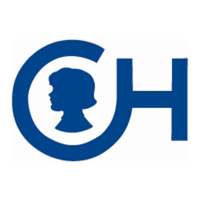 According to a recent study from scholars at The Children’s Hospital of Philadelphia (CHOP), Emory University, and the University of Southern California, African American children living in socioeconomically disadvantaged neighborhoods are significantly less likely than their Caucasian counterparts in disadvantaged or wealthier areas to receive cardiopulmonary resuscitation (CPR) from a bystander in an emergency situation not in a hospital or medical facility. This is the first study that examines racial and socioeconomic factors of children who receive CPR.
According to a recent study from scholars at The Children’s Hospital of Philadelphia (CHOP), Emory University, and the University of Southern California, African American children living in socioeconomically disadvantaged neighborhoods are significantly less likely than their Caucasian counterparts in disadvantaged or wealthier areas to receive cardiopulmonary resuscitation (CPR) from a bystander in an emergency situation not in a hospital or medical facility. This is the first study that examines racial and socioeconomic factors of children who receive CPR.
For the study, the research team used the Cardiac Arrest Registry to Enhance Survival (CARES) database to examine factors influencing bystander CPR rates for pediatric non-traumatic out of hospital cardiac arrests from 2013 to 2017. During that time period, there were a total of 7,086 recorded cardiac arrests among children with 31 percent occurring among White children and 31 percent among Black children.
The results found that a total of 3,399 children, or 48 percent of the total number of recorded cardiac arrests, received bystander CPR. When compared to White children, bystander CPR was 41 percent less likely for Black youth. Additionally, Black children living in majority Black neighborhoods with high unemployment, low education, and low median income were almost half as likely to receive bystander CPR compared to White children.
“When analyzing the epidemiology of bystander CPR in children in the United States we found lower bystander CPR rates in Black and Hispanic children compared to White children but weren’t sure if this was due entirely to racial disparities or if it was also associated with neighborhood socioeconomic factors like income, employment, and educational status,” said lead author Maryam Naim, a pediatric cardiac intensive care physician at CHOP.
The researchers believe that these results demonstrate a critical need for focused intervention in these low-income, non-White neighborhoods. For example, teaching CPR to parents before a newborn is released from the hospital, or during pediatrician visits would be good opportunities for such training.
The full study, “Race/Ethnicity and Neighborhood Characteristics Are Associated With Bystander Cardiopulmonary Resuscitation in Pediatric Out-of-Hospital Cardiac Arrest in the United States: A Study From CARES,” was published in the Journal of the American Heart Association. It may be accessed here.











